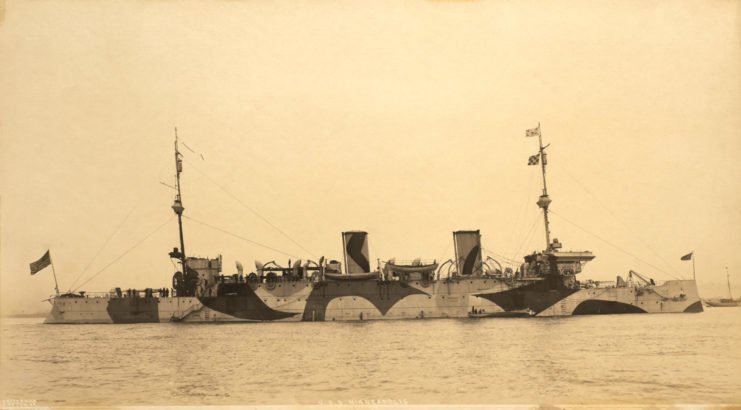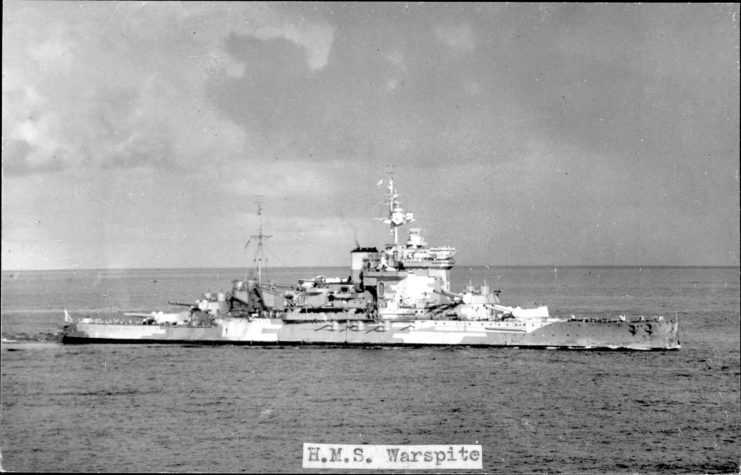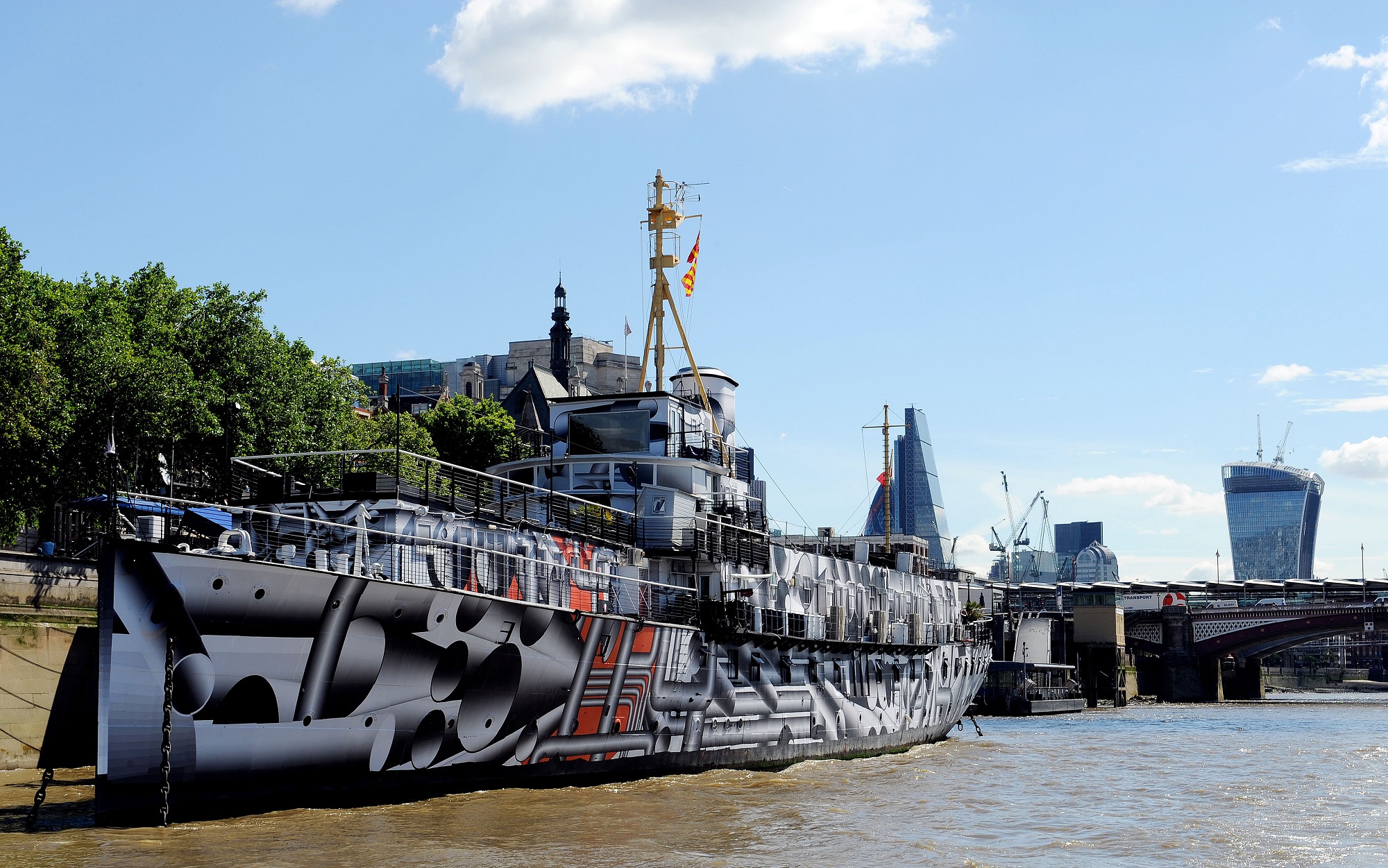The threat presented by German U-boats led to the adoption of ‘dazzle’ camouflage for merchant shipping crossing the Atlantic Ocean. German submarines were a truly terrifying foe to face and were devastatingly effective. During the First World War, when submarine warfare was still relatively new, German U-boats sank 5,700 ships and claimed the lives of almost 13,000 non-combatants in the process. The British had to do something about it. Their answer was surprising: to make their ships more visible.
At sea, it is almost impossible to hide a ship. These large, slow machines chug their way through the ocean, puffing smoke high into the air as they did so, making them highly visible. On land, even large vehicles can be hidden quite successfully, by quite literally imitating its surroundings so it doesn’t stand out. Interestingly, the exact opposite of this is more effective at sea.
An artist helps disguise ships

During WWI, an artist by the name of Norman Wilkinson was serving in the Royal Naval Volunteer Reserve. Wilkinson had been an illustrator and poster artist in civilian life, but in the Navy, he would use his skills to help save lives. He came to the conclusion that hiding a ship was impossible, so an entirely different approach was needed.
Wilkinson realized that instead of trying to hide a ship, it would be much more effective to try and make them harder to hit. A German U-boat officer only had a few valuable seconds to view a target before the submarine’s periscope was spotted. Using this small snapshot only, the submarine needed to precisely time the launch of a torpedo to meet a ship at a certain location. Knowing a ships’ distance from the U-boat, its direction of travel, and its speed was vital to scoring a hit.
This weakness was exploited by Wilkinson.
He suggested painting ships in bright, confusing, and disorienting colors, that when viewed from a distance, broke up the outline and shape of the ship, making it difficult to establish its distance, size, and direction of travel. It was hoped that even if this skewed the submarines’ estimates by a small amount, it would be enough to cause the torpedo to miss.
The patterns, which were named dazzle camouflage, were a stark departure from the usual camouflage practices of the day.
Roy R. Behrens, a professor of art at the University of Northern Iowa, said for “Wilkinson to come up with the ideas of redefining camouflage as high visibility as opposed to low visibility was pretty astonishing.”
The technique is actually seen in nature, with animals like zebras appearing to use distinct yet confusing markings to avoid predators.
Wilkinson presented his idea to the Royal Navy in 1917, who put it through testing. Once it had passed, the Navy, who were desperate for anything that would reduce losses to U-boats, set up a camouflage unit lead by Wilkinson at the Royal Academy of Arts in London.
Other artists from many different styles were brought in to help with the project.
Using the camouflage

To perfect the markings, modelers on the team assembled scale models of ships for the other artists to paint in various dazzle patterns. The models were then viewed in different conditions through a periscope by experienced naval observers. King George V was surprised when he visited the workshop and peered through the periscope. He guessed a miniature ship was moving south-by-west, when in fact it was moving east-by-southeast.
Once the designs had been fine-tuned, the team made guides to be used by dockyards for the painting of actual ships. The Navy approved the use of the patterns in October 1917.
Wilkinson was sent to the US to meet Secretary of the Navy Franklin D. Roosevelt, where he helped the US apply dazzle camouflage to their own ships.
Over 2,000 British ships were painted in Wilkinson’s dazzle camouflage, but it is not known how effective it was. However, it is believed to have improved survival against U-boats as less losses were reported amongst ships painted with camouflage. The markings were not the only defense against U-boats though.
“It’s important to remember that ships didn’t just rely upon dazzle camouflage for protection from U-boats,” Behrens said. “It was used in combination with tactics such as zig-zagging and traveling in convoys, in which the most vulnerable ships were kept in the center of the formation, surrounded by faster, more dangerous ships capable of destroying submarines.”
When all of these tactics were used together successfully, Allied ships had a much higher chance of survival.
